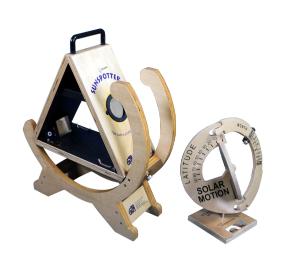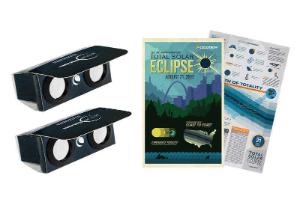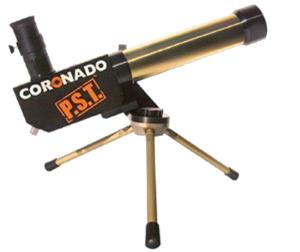Eclipse Science Facts; Plus a Free Student Handout from AccessScience
Solar and lunar eclipses captivate student’s curiosity. Help them learn that there's even more to an eclipse than meets the eye!
Fill form to unlock content
Error - something went wrong!
Get Your Free Article with Follow-up Questions for Students
You're all set!
EnjoyAccess to this content is available to Ward's World readers for free from McGraw Hill's AccessScience, an award-winning, digital STEM resource containing exclusive articles written by expert scientists and engineers; biographies of well-known scientific figures; science news, videos, and animations; and much, much more.
Instructors can use AccessScience to guide students on their research project journeys, to help students understand scientific concepts, to support distance learning efforts, in flipped classroom approaches, and in countless other ways.
Ward’s World and AccessScience have partnered to offer educators a no-obligation, free trial subscription to AccessScience. Request your free trial today to discover how valuable AccessScience can be for you and your students! Get your free trial now.
Middle School/High School
The budding astronomers in your science class are sure to be captivated by solar and lunar eclipses. Your lesson plans can help them learn that there's even more to an eclipse than meets the eye!
Sure, the massive shadow of a solar eclipse that sweeps across entire continents is quite impressive. But these spectacular events also offer scientists a unique opportunity to study aspects of the sun that are typically blocked by the 35.73 octillion1 lumens the Sun puts out. Luckily for us, only around 98,000 lux actually reach the Earth’s surface. But that’s still a lot of lumens!
What can scientists learn from an eclipse?
An eclipse is the occultation (obscuring) of one celestial body by another. During a total solar eclipse, scientists get a chance to see and photograph the Sun’s elusive corona. By observing the corona, scientists can learn more about how weather works in space and the impact on Earth.
Scientists’ are very interested in studying coronal mass ejections (CMEs), which occur when charged particles from the sun are thrust into space. If that ejection reaches Earth, it can negatively impact Earth’s magnetosphere, disrupting radio transmissions and damaging satellites and other electrical infrastructure.2 These powerful ejections can wipe out power grids all over the planet. That’s why scientists continuously work on technology to protect our infrastructure from such disruption.
CMEs often follow solar flares—a sudden flash of increased brightness on the Sun’s surface near a sunspot group.
Fun fact:
Coronal mass ejections and solar flares are known as "space weather.”
The Carrington Event is the largest recorded CME to hit the Earth's magnetosphere. That event was twice as big as any other solar storm in the last 500 years. According to the National Academy of Sciences, if a CME the size of the Carrington Event were to occur today; it could cause “extensive social and economic disruptions” due to its impact on power grids, satellite communications, and GPS systems, costing between $1 trillion and $2 trillion!
What is the Inouye Solar Telescope?
What do you use when you want to study the Sun’s explosive behavior? A telescope, of course. The National Science Foundation’s Daniel K. Inouye Solar Telescope is the most powerful solar telescope on Earth. It’s a four-meter solar telescope on the island of Maui, Hawaii.
A key science goal for solar astronomy is understanding how the Sun, space weather, and atmospheric activities on Earth are related. So, the Inouye Solar Telescope’s primary goal is to measure the magnetic field of the Sun at three different layers:
- at the photosphere,
- in the chromosphere,
- and throughout the solar corona.
If you don’t happen to have an Inouye Solar Telescope handy, we recommend the Coronado Personal Solar Telescope for your classroom.
With your lesson plans, students can learn what’s going on when the Sun and Moon seem to disappear during one of the most mysterious astronomical events. Inspire your class to learn more about the effect eclipses have on the world around them.
Download McGraw Hill’s AccessScience article, Eclipse, to help your students explore this fascinating natural phenomenon. The comprehensive article answers probing questions your students want to know, such as: What is a corona? Can you go blind when celestial bodies align? What does Syzygy mean?
The free download also includes assessment questions & answers you can use to test student understanding. Download McGraw Hill’s AccessScience Teacher Answer Key for this article.
1. Kogalla.com: How many lumens is the sun? 2. Nasa.gov: Solar Storm and Space Weather
Recommended products
[StartProductBlock]

Solar Eclipse Bundle
Students learn the basic relationships within our solar system (rotation, revolution, seasons, moon phases, and eclipses).
[EndProductBlock]
[StartProductBlock]

Celestron EclipSmart 2x Viewers Sun and Eclipse Observing Kit
View eclipses, sunspots, and general solar viewing at 2X magnification!
[EndProductBlock]
[StartProductBlock]
Modeling the Moon’s Motion and Phases Lab Activity
The kit uses teacher-directed lessons and student activities to help students understand the Moon's motions and how to interpret them.
[EndProductBlock]
[StartProductBlock]

Coronado Personal Solar Telescope (PST)
Safely observe the sun with this high-quality scope equipped with glass or Mylar white light solar filters. Includes an integrated hydrogen alpha solar filter to see sunspots, solar phenomena, flares, filaments, and prominences.
[EndProductBlock]
